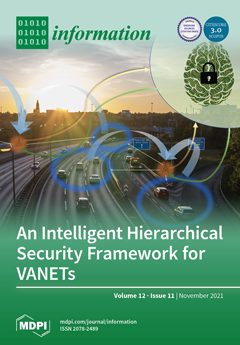Open AccessFeature PaperArticle
Severity Assessment and Progression Prediction of COVID-19 Patients Based on the LesionEncoder Framework and Chest CT
by
You-Zhen Feng, Sidong Liu, Zhong-Yuan Cheng, Juan C. Quiroz, Dana Rezazadegan, Ping-Kang Chen, Qi-Ting Lin, Long Qian, Xiao-Fang Liu, Shlomo Berkovsky, Enrico Coiera, Lei Song, Xiao-Ming Qiu and Xiang-Ran Cai
Cited by 10 | Viewed by 3050
Abstract
Automatic severity assessment and progression prediction can facilitate admission, triage, and referral of COVID-19 patients. This study aims to explore the potential use of lung lesion features in the management of COVID-19, based on the assumption that lesion features may carry important diagnostic
[...] Read more.
Automatic severity assessment and progression prediction can facilitate admission, triage, and referral of COVID-19 patients. This study aims to explore the potential use of lung lesion features in the management of COVID-19, based on the assumption that lesion features may carry important diagnostic and prognostic information for quantifying infection severity and forecasting disease progression. A novel LesionEncoder framework is proposed to detect lesions in chest CT scans and to encode lesion features for automatic severity assessment and progression prediction. The LesionEncoder framework consists of a U-Net module for detecting lesions and extracting features from individual CT slices, and a recurrent neural network (RNN) module for learning the relationship between feature vectors and collectively classifying the sequence of feature vectors. Chest CT scans of two cohorts of COVID-19 patients from two hospitals in China were used for training and testing the proposed framework. When applied to assessing severity, this framework outperformed baseline methods achieving a sensitivity of 0.818, specificity of 0.952, accuracy of 0.940, and AUC of 0.903. It also outperformed the other tested methods in disease progression prediction with a sensitivity of 0.667, specificity of 0.838, accuracy of 0.829, and AUC of 0.736. The LesionEncoder framework demonstrates a strong potential for clinical application in current COVID-19 management, particularly in automatic severity assessment of COVID-19 patients. This framework also has a potential for other lesion-focused medical image analyses.
Full article
►▼
Show Figures





